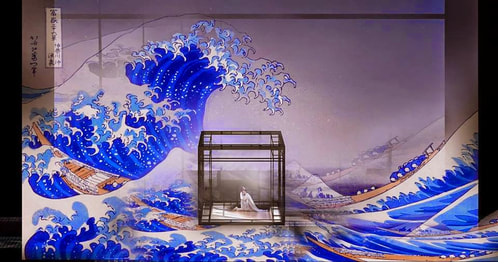ARTS & CRAFTS
CALENDAR
Task 1 has to be developed along first day morning. Before starting any task, read the whole page. It is important to have task 2 and 3 in mind to decide in each group the artistic techniques you want to use and the materials you are going to need and that every team member will have to bring.
Tasks 2 and 3 have to be developed throughout the next 6 working days.
Task 1 has to be developed along first day morning. Before starting any task, read the whole page. It is important to have task 2 and 3 in mind to decide in each group the artistic techniques you want to use and the materials you are going to need and that every team member will have to bring.
Tasks 2 and 3 have to be developed throughout the next 6 working days.
TASK 1Izanagi and Izanami. The myth of worl creation in Japan.
Ancient Mayan calendar sculpture. (Mexico)
Decoration by spirals at New Grange entry (Irland).
|
COLLECTION AND ANALYSIS OF IMAGES If you have reached this point, you are supposed to know many myths belonging to different cultures. You have surely researched, compiled and analyzed images from different mythologies in order to create your own one. What do you have to do? Go back to study those pictures and search new ones, researching a bit more. This time you have to pay attention to the artistic visual elements appearing in the pictures: geometric shapes, main types of lines, colours used, composition, beauty standards, what is represented and how. To sum up, you have to look for key design ideas in each culture: common elements and those that set them apart giving them an identity. You have to do a connotative and denotative analysis of the images. How do you have to deliver results?
|
TASK 2 |
CREATION OF A MYTH'S IMAGE Once you know the basic structure of mythologies and you have learnt about different myths, it's time to express through sketches, images, and so on, the mythology you have created. You need to give the myth an image and it has to be coherent and suitable enough with the culture in which it is developped. This is the basis for the scenography for the final video you have to make. What do you have to do? You have to make enough sketches to define clearly the mythology you have created. How do you have to deliver results?
Examples of made-up mythologies Here you can find some examples of made-up mythologies, developed in different environments, to be used as inspiration. Of course, only as an idea, not pretending you develop anything similar.
|
TASK 3Le Orfeo "Favola in Musica", Camerata de Caracas, 2017
https://leplaylist.wordpress.com/2014/09/16/newvillager-y-la-concepcion-de-la-musica-como-experiencia-mistica-mitologia-y-arte/
|
PRODUCING THE SCENOGRAPHY (SET) The goal for this task is to produce the scenography that would be used in the video in which you would represent the myth you have created. This set will be based in the sketches you did in the previous task. And they are based, at the same time, in the images you have analyzed. Keep in mind that global image has to be as coherent with the idea as possible, as much as with the music. It is not a copy, but a reinterpretation of the myths. When working in this task you would have several options: presenting it on paper or developing it by 3D designing tools. What do you have to do? You have to create a complete scenography for the final video. This means that you have to create background images for the mythology, the place in which it would take place and the required stage props for the characters (masks, costumes, ....). How do you have to deliver results?
|
EXAMPLES OF SCENOGRAPHIES
|
THE LION KING, MUSICAL
"With Julie Taumor's genious and artistic and creative vision, musical genre goes ahead a bit. She is the director of this amazing and colourful staging. The Lion King takes the spectator directly to African exotism, with evocative musics, going down to history, becoming a changing point in artistic design and, in general, in musical genre, that cannot leave anyone indifferent. It's a great creative team for an unforgettable musical. THE LION KING is an outstanding musical, the result of the marriage of recognized musical and theater talents at world level and the fusion of the more sofisticated African, western and Asiatic art disciplines. It has been seen by 85 million stectators and it has won 70 prizes. This incredible musical has been more than 19 years on stages in Broadway. It has songs by Elton John and Tim Rice, and Lebo. M y Hans Zimmer's music. It's a unique performance full of family values, that shows the relationship each one of us has with our own roots. THE LION KING makes the spectator rethink about the importance of each one of our actions and the effects they cause to our environment, as well as the importance of feeling part of a group, and how the whole of it makes up our destiny. Besides, it's a tribute to respect and love for Nature". |

MADAME BUTTERFLY by PUCCINI/ THE WAVE by HOKUSAI
Scenography by Peruvian Pepe Sialer for Madame Butterfly opera by Giacomo Puccini, 2014.
Scenography by Peruvian Pepe Sialer for Madame Butterfly opera by Giacomo Puccini, 2014.

The scenography is based on the engraving "Mont Fuji seen through the Kanagawa waves" by Katsushika Hokusai, simply known as Hokusai, JApanese painter and engraver who lived between 1760 and 1849- The Wave is from 1830.
Come on! and, as Picasso would say, let's inspiration find us working!









